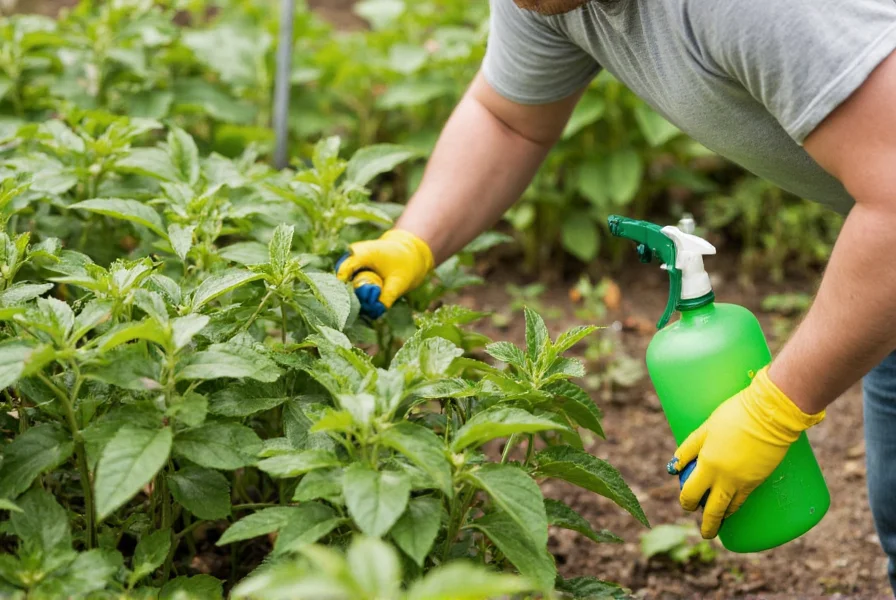Understanding the full spectrum of chili applications requires examining how this versatile plant transforms from simple garden produce to valuable resource across multiple industries. Unlike fleeting food trends, chili applications have evolved through centuries of practical experimentation and modern scientific validation.
The Culinary Powerhouse: Beyond Just Heat
Chili peppers serve as fundamental flavor architects in global cuisines, contributing far more than mere spiciness. Professional chefs leverage specific chili varieties to create complex flavor profiles:
| Chili Variety | Scoville Heat Units | Primary Culinary Application |
|---|---|---|
| Jalapeño | 2,500-8,000 | Salsas, pickling, stuffing |
| Habanero | 100,000-350,000 | Tropical fruit sauces, Caribbean dishes |
| Poblano | 1,000-2,000 | Mole sauces, chiles rellenos |
| Cayenne | 30,000-50,000 | Spice blends, hot sauces |
Recent culinary research reveals that capsaicin interacts with other flavor compounds to enhance overall taste perception. This scientifically validated flavor modulation explains why chilies appear in unexpected applications like chocolate production and craft brewing. Professional kitchens now employ precise chili application techniques to balance heat with complementary flavors rather than simply maximizing spiciness.

Medicinal Applications: From Folk Remedy to Clinical Practice
The medicinal applications of chili compounds have transitioned from traditional folk medicine to evidence-based clinical practice. Capsaicin's mechanism of action involves temporarily depleting substance P, a neurotransmitter responsible for pain signals.
Clinical studies support several therapeutic applications:
- Topical pain relief: 0.025%-0.1% capsaicin creams effectively treat osteoarthritis and neuropathic pain
- Migraine prevention: Intranasal capsaicin shows promise in reducing migraine frequency
- Psoriasis treatment: Capsaicin formulations reduce scaling and itching in plaque psoriasis
- Metabolic health: Dietary chili consumption correlates with modest improvements in metabolic markers
Unlike pharmaceutical pain relievers, chili-based topical applications produce minimal systemic absorption, reducing potential side effects. However, proper application technique matters significantly - incorrect usage can cause temporary discomfort without therapeutic benefit.
Agricultural and Gardening Applications
Organic farmers and home gardeners increasingly adopt chili applications for sustainable pest management. The natural insecticidal properties of capsaicin provide effective protection without synthetic chemicals.
Successful garden chili applications include:
- Homemade spray formulations: Combining chili extract with soap creates effective aphid deterrent
- Companion planting: Strategically placing chili plants deters rodents and certain insects from vulnerable crops
- Seed treatment: Chili-infused solutions protect germinating seeds from soil pests
Research from agricultural extension services demonstrates that properly prepared chili applications reduce pest damage by 40-60% compared to untreated controls. The key to effective chili application in gardening lies in proper concentration - too weak provides no protection, while too strong can damage plants.

Industrial and Unexpected Applications
Beyond the kitchen and garden, chili compounds serve in surprising industrial applications. Law enforcement agencies worldwide utilize high-concentration capsaicin in non-lethal defense formulations. The military employs similar compounds in training exercises to simulate chemical exposure.
Emerging research explores additional industrial chili applications:
- Biodegradable plastics: Capsaicin derivatives show promise in creating heat-resistant bioplastics
- Textile preservation: Natural moth repellent properties protect stored fabrics
- Wildlife management: Capsaicin-treated seed coatings prevent bird damage to crops
These industrial applications leverage chili's natural properties while reducing reliance on synthetic chemicals. The growing field of biomimicry continues to discover new practical uses for this ancient plant.
Safety Considerations for Effective Chili Application
Proper safety protocols ensure effective chili applications without adverse effects. Key considerations include:
- Gradual heat exposure: Start with milder varieties before progressing to hotter chilies
- Protective handling: Use gloves when processing hot peppers, especially when making concentrated extracts
- Proper ventilation: Essential when working with dried chili powders or concentrated extracts
- Neutralizing agents: Keep dairy products or oils nearby to counteract accidental exposure
Understanding individual tolerance levels prevents negative experiences that might discourage future chili applications. Most adverse reactions result from improper handling rather than the chilies themselves.
Implementing Effective Chili Applications
Successful chili application requires matching the right variety to the specific purpose. Consider these evidence-based recommendations:
- For culinary applications: Match heat level to dish complexity (milder chilies for delicate dishes)
- For medicinal applications: Use standardized capsaicin concentrations for consistent results
- For gardening applications: Apply chili sprays during cooler parts of the day to prevent plant damage
- For household applications: Properly diluted solutions work better than overly concentrated mixtures
The most effective chili applications follow scientific principles rather than folklore. Modern understanding of capsaicin chemistry allows precise implementation across diverse fields, maximizing benefits while minimizing potential drawbacks.
Frequently Asked Questions About Chili Applications
- What is the most effective way to use chili for pain relief?
The most effective method for pain relief involves using topical creams containing 0.025%-0.1% capsaicin, applied consistently for 3-7 days. Start with lower concentrations to build tolerance, applying to clean, dry skin 3-4 times daily. Significant pain reduction typically occurs after several days of consistent use as substance P depletes in nerve endings. Always wash hands thoroughly after application and avoid contact with eyes or mucous membranes. - Can I make effective pest control spray using homegrown chilies?
Yes, you can create effective pest control spray using homegrown chilies. Blend 10-15 hot chili peppers with 2 cups of water, let steep for 24 hours, then strain. Add 1 teaspoon of liquid soap as an emulsifier. For best results, use mature, fully colored chilies which contain higher capsaicin levels. Apply early morning or evening to avoid leaf burn, and reapply after rain. This natural chili application deters aphids, spider mites, and some beetles without harming beneficial insects when properly diluted. - How do I prevent skin irritation when handling hot chilies?
To prevent skin irritation when handling hot chilies, always wear nitrile gloves (latex doesn't provide adequate protection). Work in a well-ventilated area, especially when cutting dried chilies. If you experience burning, apply milk, yogurt, or vegetable oil rather than water, which can spread the capsaicin. Never touch your face while handling chilies, and wash all surfaces and tools thoroughly afterward. For severe reactions, seek medical attention rather than attempting home remedies. - Are there scientifically proven health benefits to regular chili consumption?
Yes, multiple studies confirm health benefits from regular chili consumption. Research shows capsaicin may modestly increase metabolic rate and fat oxidation. Population studies associate regular chili intake with lower rates of cardiovascular disease and certain metabolic conditions. The anti-inflammatory properties of capsaicin show promise for various conditions, though more research is needed. Benefits appear most significant when chilies are consumed as part of a balanced diet rather than through supplements.











 浙公网安备
33010002000092号
浙公网安备
33010002000092号 浙B2-20120091-4
浙B2-20120091-4